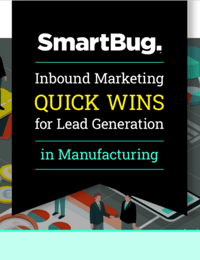
When manufacturing leaders think about sales enablement, one major hurdle comes up in nearly every conversation: “How will HubSpot integrate within my current sales ecosystem?”
Then, the (often head-scratching) question that follows is, “Well, what is my official system of truth?”
The key to satisfactorily answering both of these questions is a seamless integration with your existing customer relationship management (CRM) tool, such as Microsoft Dynamics, Salesforce, or NetSuite. A CRM integration is a project to connect two systems so they can talk to each other in real time. More specifically, it means integrating the data flow from HubSpot to your existing CRM, or from your existing CRM to HubSpot.
Just like all projects, an integration should have a formal start and end date. It’s common for there to be second or third iterations down the line, but a well-documented and well-executed integration project should not be drawn out forever.
By integrating systems to allow them to talk to each other, sales can better continue the conversation that marketing started, and marketing can respond to sales activity to tell a consistent story, supporting customers on their Buyer’s Journey.
This integration is critical for several reasons:
- Many manufacturers have a limited supply of leads
- The deals they are working through their pipeline are high-value
- There are often significant repeat purchases
- There are often multiple stakeholders within the buying process.
Read on to learn more about the five stages involved in setting up a proper integration. These stages are consistent across industries, but we’ll also cover several unique factors that manufacturers should consider.
Discovery
The purpose of the discovery phase is to set clear parameters around the project, understanding the elements and pieces of data that need to be integrated between systems.
The following steps occur during the design phase:
- Outline the project
- Provide clear business requirements
- Develop a high-level design overview
- Plan the test criteria
- Finalize the project plan
In the discovery stage, you should see a clear picture of the end result of the integration.
Manufacturers Integration Tip: Even though data should flow bidirectionally, you should pick a single system of record to use (HubSpot or your CRM).
Design
The design phase includes a review of the business requirements, mapping, and data flow documents with the integration platform. During this phase, you will identify and design the data workflows. This process might include asking questions like, “Are there limitations to how often the systems can talk to each other, or is all of the data real-time?”
There will be unique fields within the contacts, companies, and deals that will need to be created in multiple systems (e.g., HubSpot and Microsoft Dynamics) so the data has an appropriate field to map, or sync, to. You may uncover additional pieces of logic or unique specifications that may need to be added in order to build and complete the project.
You will also work on an internal quality assurance (QA) plan to test the integration prior to your acceptance of the integration. Just as important as designing the integration is designing the QA or testing phase.
Manufacturers Integration Tip: In the design stage, understand that there are likely multiple contacts and deals per company and even multiple companies that tie into a deal (e.g., selling through channel partners).
Build
The build phase is when the design stage is implemented. The integration will be built to the unique specifications outlined in the design stage and will be tested for QA in a controlled development environment.
Depending on the needs of the integration systems, some of the pieces of data will flow in real time (e.g., when an order is placed), and others will flow at a specified time (e.g., the day payment for the order was received) as outlined in the design stage of the project.
Manufacturers Integration Tip: Define the product’s “sold” date prior to integration (i.e., is it when the order is placed, order is shipped, order is received, or payment is received?).
Quality Assurance
The QA stage is just as important as the build stage. It is imperative to test the data flow mappings within a controlled development environment (and to resolve any defects).
At this point in the process, you should be ready to present the integration results for sign-off. Your presentation should include a live demo executing some of the test cases.
Manufacturers Integration Tip: All stakeholders should be able to test the process, including sales, marketing, finance, and management. Anyone who is impacted should feel comfortable with the integration.
Acceptance
The last stage in the integration process is probably also the most exciting: the formal setup of the integration in your HubSpot portal.
During this stage, you will perform any initial synchronization of the data, turn on the workflows, and verify that the data is moving properly. This will allow you to verify the integration is performing as expected—or identify any defects that need to be resolved.
By now, your internal stakeholders should feel comfortable with the data flowing and how it impacts internal systems. There may be a small element of post-integration support in the acceptance stage.
Manufacturers Integration Tip: If possible, avoid arriving at an acceptance stage at the end of a month or a quarter. Aim for a full system integration to occur at a time when it will have minimal impact on other departments.
How Long Should an Integration Take?
Each integration is unique and will have a different amount of custom elements that need to be mapped and discovered. However, in general, it’s fair to assume a typical integration project will take six weeks.
In the interest of staying on time and on budget, all of the internal stakeholders should be present and available for the duration of the project.
What About Duplicate Data?
We hear this question often from clients who are seeking an official system of record and know that their current CRM isn’t neat and tidy. It is important to keep in mind that HubSpot is unique on the email address level, so if duplicate email addresses are identified, new contacts will not be created in HubSpot. But it’s still a best practice to have a clean data set before you begin the integration project (psst—SmartBug can help you with that!).
About the author
Stephen Lackey is SmartBug's VP of Marketing and he is based out of Charlotte, NC. His background is hyper-focused on marketing and sales enablement, working at Fortune 500 companies, startups, and other industry disruptors. His marketing degree is paired with an MBA where Stephen seeks to uncover the 'why behind the why' within marketing data to drive top line revenue. Read more articles by Stephen Lackey.






















